DEVELOPMENT
1,694
Weekly Update - Experimenting With The New Elements Via Belief V3
3 years ago
Last week, I wrote about an idea I'd had for combining the elements and runes in Atonal Dreams, and how I'd been experimenting with a side project - essentially a remake of my old 'Belief' project from late 2019 - to get a feel for whether or not the change would work. I've spent this week working away at that project, so I want to talk about it a bit!
![]()
I can but wonder what people's first impressions of that image are!! (Click for a bigger version.)
The fundamental idea behind the game is that you play as a representative of a belief system of your naming, and you have to go around convincing people with other belief systems that theirs is wrong and yours is right.
In a ridiculously silly way, of course; I for one find the idea of two groups arguing about whether to devote one's life to, say, Racism or Sexism hilarious in its absurdity, but I wonder whether it'd be just repulsive to people who'd see it through some kind of political lens!
(Though of course they could name their own in-game belief system after whatever they prefer in reality, and delight in winning over virtual others to it.)
I have ideas about what the overall purpose or story (if any) of the game could be, but I've not decided on anything; for now I've just been concerning myself with getting the 'battle' system working, which I'll summarise the features of here:
![]()
Many aspects are similar to - or copied from - Atonal Dreams, though of course elements + runes have been replaced with just the six elements (or maybe I'd reuse 'sentiments'?) that I mentioned last week:
![]()
Which was the whole purpose of spending the week on this. I am getting more used to them, and more convinced of the value of switching over to them!
![]()
Like in Atonal Dreams, characters have their stats shown on these 'statues'. Instead of having separate HP and light/dark taming values, though, they have a singular bar which shows their
conviction for both sides. They start with full conviction (equal to some 'max HP' equivalent stat) for their own side, and 0 for the other. The bar represents the balance of both values, so appears half empty when 'battles' begin. I went through several iterations to get to this point!
Characters have two stats -
charisma and
toxicity - and skills are typed with one or the other of these. Charismatic skills add conviction for your side to the target (and as such function as both 'taming' for foes and healing if used on allies), while toxic skills
reduce conviction for the target's side (like basic damage). Basically "I'm right" vs "you're wrong" (which aren't the same thing).
If a character's conviction for their own side reaches 0, they're 'scared off', and they leave; this is the main purpose of toxic skills. But if you fully engulf their own conviction, they join your side and - like in Atonal Dreams - can be controlled as an ally (or they run away if your party is full).
In the image there, the 'Gym Bunny' would be scared off if her conviction for her own side (green, Shrekism, ha ha so hilarious) were reduced by just 1 more point, but a few more points added to the player's brown side would convert her over.
You need twice as much 'damage', then, to convert someone over compared to having them flee, but that's made up for by gaining an additional ally. Plus I might add some Pokemon-like aspect where taming over allies adds them permanently to your 'following' or something, and you can use a party of up to six people you've previously convinced over (which may or may not have to include the player-created character).
![]()
Characters have a number of skills (8 currently, though I've been experimenting with other possibilities), which - like in the 2019 Belief - have their availability determined by the heart/excitement/wakefulness/arousal/whatever value. So for example a character might have the 'Tantrum' skill which they can only use when they're highly riled up (though most skills would have availability for most of the middle values).
(This and determining turn order are the heart stat's only purposes; it doesn't affect 'damage'.)
Skills are shown as cards, both because I found the visual harmony with all the other UI elements really pleasing, and because it's based on the reality that our choices aren't exactly entirely free; the 'hand of cards' drawn from a wider memory deck that are available to us at any given time is determined by factors like our mental state (and other external factors).
Skills affect conviction, mostly, though many also have a chance to alter the runes (or whatever I'll call them), or to inflict Moods.
Moods work essentially the same as in previous projects I've had them in, in that characters can have up to three at a time, but opposites override one another, so someone can't be afflicted with both Joy (the Levitality mood) and Distress (the Gravitoom one) at the same time; inflicting one would override the other. They can have one from each pair - eg Lust, Anger, and Distress - at the same time, though, which I find funny. (Moods are shown as a coloured ring around the related rune on the statues.)
The main purpose of moods is to increase or decrease the effectiveness of skills. Someone under the Discord mood, Anger, would have empowered Discord skills, and be affected more by opponents' Discord skills, while their own and opponents' Harmony skills would be weakened.
Unlike the old Belief or Atonal Dreams, battles are kind of like Pokemon double battles;
only the two characters at the front take turns and can be targeted. If one is lost, everyone moves forward to fill up any empty spaces.
You can
switch between benched characters at any time during your turn, and unlike in Pokemon, it doesn't end the turn, meaning you can switch around as much as you want looking for the right skill to use, if you so desire.
![]()
I've spent probably the biggest chunk of time this week on fiddling around with how exactly 'damage' calculation works with two runes - since that was my biggest concern about revising Atonal Dreams to use these elements - and how that might be shown to the player in a way that feels accessible rather than baffling. I'm still working on it. It's tricky!
What I've got currently is this simplistic 'damage' formula:
![]() atk
atk is equal to either the Charisma or Toxicity stat, based on skill type.
resonance is a value ranging from 0 to 16, which is the total of the 'closeness' of runes. For example, the resonance between
A and
V is 0, but for
A and
a it's 3. There are four 0-4 values used, using both of the skill's runes and comparing them to the user's and target's relevant runes (so runeA-actor, runeA-target, runeB-actor, runeB-target). This multiplier ranges from 1 (16/16) with no rune similarity to 2 (32/16) at max rune similarity. Unlike in Atonal Dreams (currently), dissimilar runes don't
reduce power below the base stat.
Moods that match the rune add 1 to the
moodNumerator, while conflicting moods add 1 to the
moodDenominator. That means this multiplier ranges from 1/5 to 5/1... though that might be too extreme (though having four favourable moods might be so rare that it'd be worth rewarding).
def is equal to the Charisma or Toxicity stat of the target; the same stat as the one used for the atk value (if you're trying to be charismatic, for example, you have to be more charismatic than your target already is to win them over).
![]()
I've revised this predictor a whole bunch of times already, and will likely continue to do so! Currently, the skill's two runes - H and J here - are in the middle, and the numbers above and below them are their resonance, which are added up (so the resonance value in the formula is 10 here); the extending lines hopefully clarify where the value is coming from. The values in the lower corners are the charisma stats being used for attack and defence. At the bottom is the amount of damage - or maybe I'll use the term 'influence' - the skill will do.
It's hardly ideal - I can easily imagine confusion from anyone looking at this for the first time - but I tried a bunch of times, and all my attempts had issues. Most games don't give you any in-game insight into their far more convoluted calculations for good reason!
There's also a similar formula for determining whether or not moods are applied; you're more likely to inflict Joy with a skill that can if you're in a state of Joy yourself, for example. The percentage chances are shown at the side of the predictor.
I wonder how much time is spent experimenting with other games' damage formulae just to get them to a point where they feel right? I don't remember doing much of that with the games I made when I was younger; I'm surprised MARDEK turned out okay, considering that!
![]()
Characters always say a brief comment - or 'quip' - before using a skill. The way it's set up currently, each character has their own unique set of written quips, with up to four for each of their skills, from which one is randomly chosen. I could also easily add functionality for state-specific quips, like 'if used on character named X' or 'if afflicted with mood Y' or whatever.
Whether this would add a lot or get quickly grating, I'm unsure; it could be used as the primary form of silly storytelling/immersion or humour, and I personally still laugh a bit at the absurdity of lines like this one despite seeing them a bunch of times by now.
I'm also thinking of adding some kind of combo system, where following certain skills with specific others could lead to either power multipliers, or perhaps there could be counters or something; all things I'd need to experiment after getting the basics sorted out.
![]()
The character models are using a second stab at a design decision I first tried in Mentales (which I've been meaning to get back to) earlier this year, I think, with faces made of a tiny pixelated texture that can be easily created or edited within the game. I made new models, though, which are more 'realistic' (though still very stylised, obviously).
I personally like using the simple face drawing editor I made a lot - every time I opened up this editor to add or fix something, I couldn't resist the urge to draw a new face! - but I know it won't be everyone's cup of tea, so there'd be plenty of premade faces for the player to load in (and edit, if they so desired).
I wanted to include blinking eyes and a mouth that can open for talking animations, so I had to figure that out; the solution I used - splitting the face into separate eyebrows, eyes, and mouth sections and only switching out the mouth for talking and the eyes for blinking - works, though it's not without its issues. Ehh. What isn't, though?!?
This editor is for my use only at the moment, not a hypothetical player's, hence the less-than-beautiful look of it!
![]()
One nice thing about using pixel textures for faces is that the exact same textures can be used on the UI statues. So the statues' faces blink and emote with the models' with no additional asset creation required!
![]()
Since the main purpose of spending the week working on this was to refine and familiarise myself with the new elements - and to decide whether or not to stick with them - and because the game will use silly person archetypes as opponents, coming up with some of those for each element was a useful exercise:
![]()
Are you familiar with the term 'Gym Bunny'? It's the sort of thing I'd understand but wouldn't use myself. Maybe it's not widely used or has connotations I'm unaware of! Since
Viscereal is all about the bodily and physical, some kind of fitness fanatic worked (a younger me probably would have made a prostitute, I say, rolling my eyes). She should be wearing more of a top, but I've not added many clothing parts yet ('naked' bodies have an underwear texture, which can be coloured by equipment - equippable underwear was a thing back in Clarence RPG! - and that's what the 'top' is here).
![]()
I'd say the 'eccentric who's into conspiracy theories, mindfulness, and magic crystals' is fairly recognisable and a good fit for what
Abstral is meant to represent, though I wasn't sure about the name; I also considered 'Starchild'.
![]()
Something like 'punk' would be a good fit for
Discord, though this Karen was one of the first characters I made - what with the new archetype being prominent in the recent Zeitgeist - so I just decided to save myself a bit of work (as I thought a punk would need some new clothing bits to read as one at all). This is one of the archetypes that would become very quickly outdated, no doubt! I'm wondering whether to draw on all of history for them rather than just recent times, so there might be things like hippies and
∞ flappers ∞ and such.
![]()
I wasn't sure about
Harmony. I know the
kind of person it should be - someone nice and supportive who wants to keep the peace - but I wouldn't say 'mediator' is some well-known archetype or anything. Maybe counsellor/therapist would be better, come to think of it, though that's more one-on-one... hmm.
![]()
A
Gravitoom archetype wasn't too hard to come up with! These are all female, by the way, because it makes no sense to make two base models until I'm sure I'm not going to massively change anything. I always used to start with a male default from which I derived a female variation - that's what I did for the Atonal Dreams models - though recently I've been using female defaults more often.
![]() Levitality
Levitality was less obvious, but I suppose fame-seekers - extroverted types who want attention and fun, lively lives - fit well, and this seemed like more of a comically recogniseable archetype about which people already have feelings, rather than something more bland like 'party animal'.
![]()
![]()
This is more related to how I'd integrate the revised elements into Atonal Dreams than the mechanics of this game, but I gave some thought to how they'd manifest, both as moods (which I did need to decide on for this), and as as flashy elemental particle effects:
Viscereal would be stony earth, blood, and general 'physical'; kind of a combination of Pokemon's fighting, rock, and ground types. Interestingly, all those types were lumped together under the same 'fighting' type in the (early) TCG. Its mood is
Lust, as in the carnal desire for sensation (not just sex, could be general material greed too, coveting possessions).
Abstral would be 'spiritual', like aether in MARDEK, but also stuff like Pokemon's psychic; anything 'paranormal', basically. Its mood is (currently)
Awe, like having your eyes opened to some mind-boggling, potentially terrifying grandeur you don't exactly understand.
Discord is destructive chaos, and as such manifests as both flames and lightning (the Fire Benders in Avatar: The Last Airbender used both, notably). Its mood is
Anger.
Harmony, which I'm getting more used to being pale blue, would manifest as holy light like before, but also - interestingly - ice, or crystal, which are examples of sturdy, natural order. Maybe water, too? Its mood I'm uncertain about; I've currently got
Love - as in genuine appreciation and connection, contrasting with Viscereal's Lust - but could have Amicable or Friendly, as I've used in other things before.
Levitality would be a combination of both grassy, vegetative nature -
life - and wind, as it's all about joyful, extroverted expression, movement, vivacity; its colour is between the yellow and green typically used for those elements in other JRPGs (including MARDEK). Its mood is
Joy.
Gravitoom would be 'darkness', less in an eeeeevil sense, and more in a sad or scary way, like a dark pool deep in a cave or something. Its mood is
Distress, which kind of combines the Crying and Panic from the original Belief.
![]()
I'm unsure whether or not I've explained this project (which doesn't even have a finalised name yet) well at all! To be clear, though, the whole point of spending the week working on it was to familiarise myself with the new elements... which I feel I'm
getting used to now, and I'm becoming more convinced that switching over to them would be wise in the long run (two rune calculations is easier than the rune calculation plus the varying elemental relationships), but I'm still not quite there.
Plus I'm still in the exciting early stages of development for this, so I might spend a bit more time on it.
Whether or not I'd finish it up and release it, I'm unsure; it'd be nice to, but I'm not taking it as seriously - like a big Work Project - as I am with Atonal Dreams. At least not yet. I'd like to think I could finish it more quickly, especially if it was more of a procedural every-run-is-different thing rather than a story-driven one-shot plot... but I'm obviously terrible at estimating how long things will take to finish! Plus I don't want to get
too distracted from Atonal Dreams!!
I have ideas for the structure and 'story', but I'll probably talk about those next week!
(Hopefully I won't regret writing about this personal project...!)




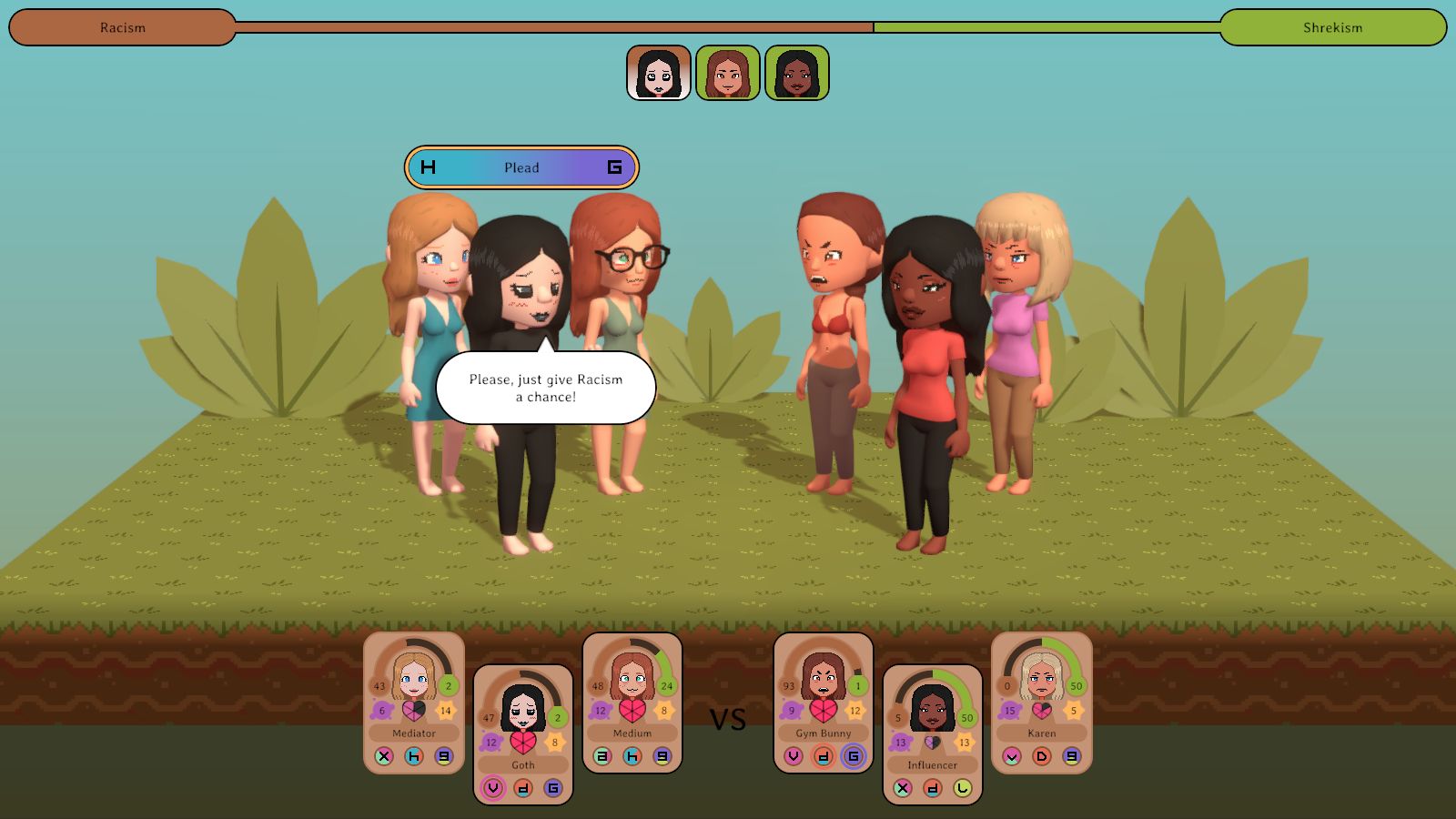



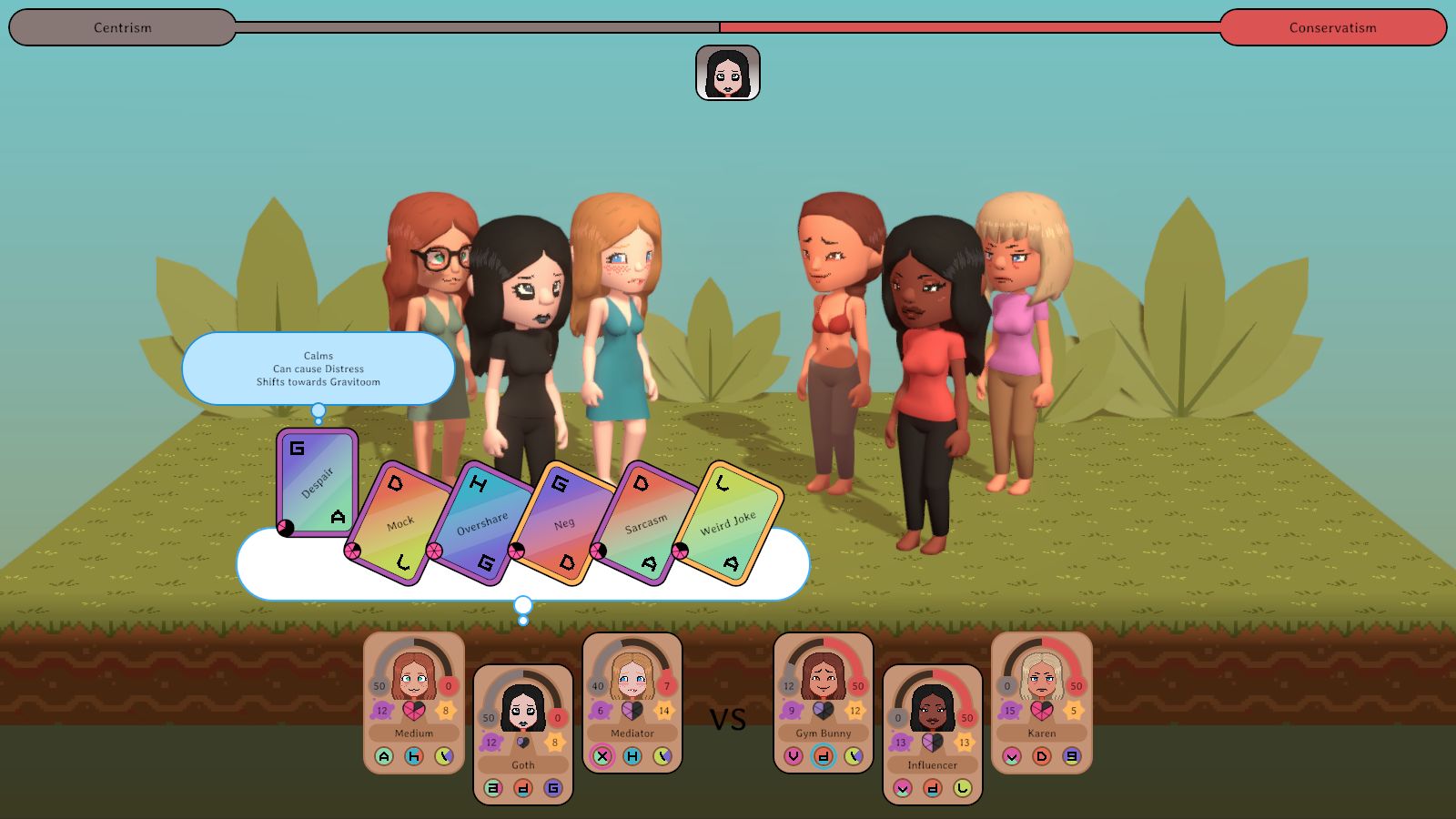
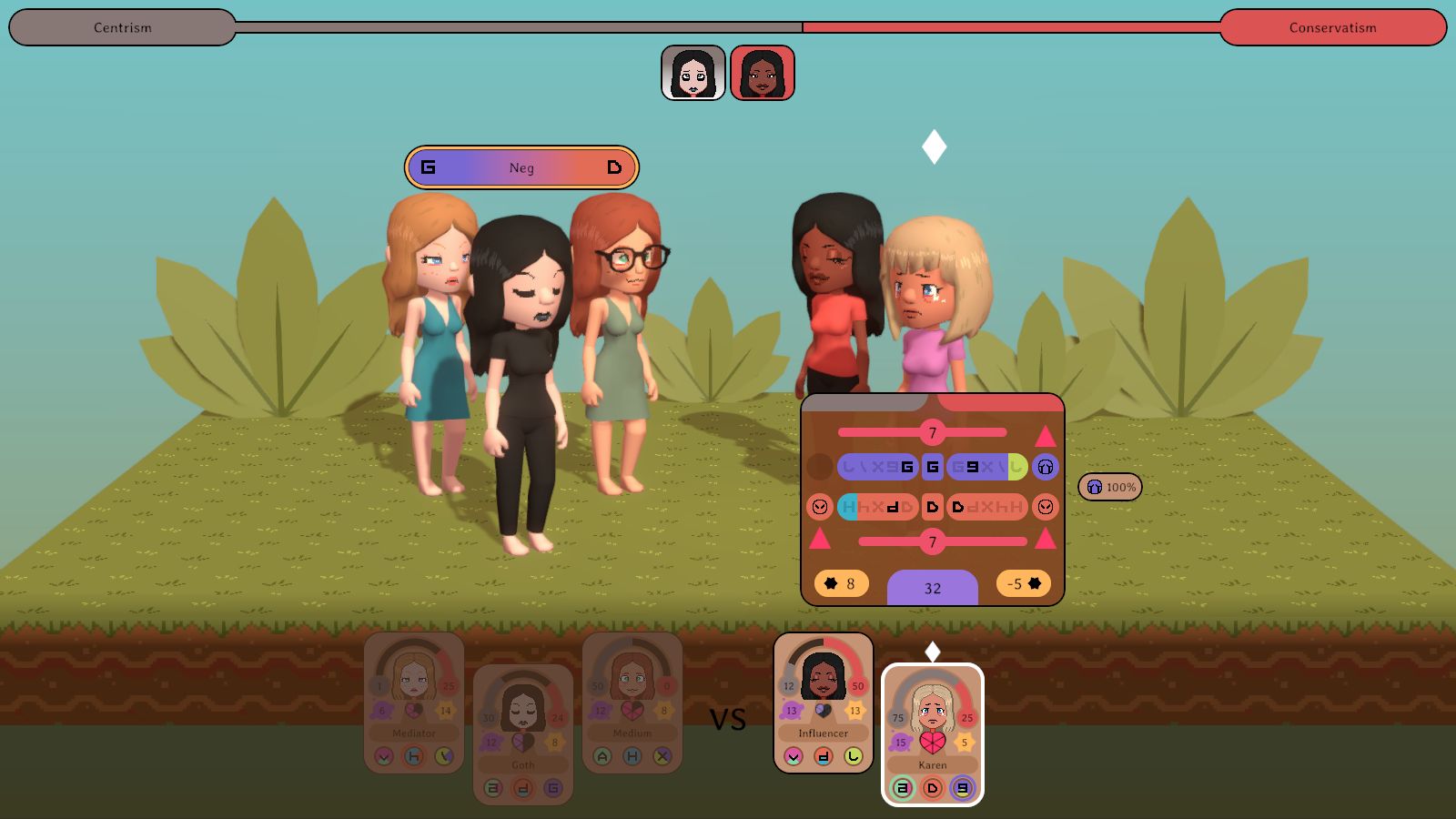

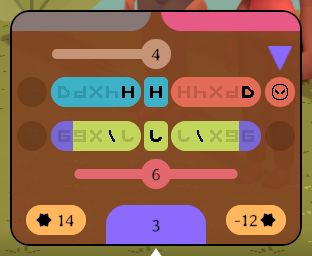
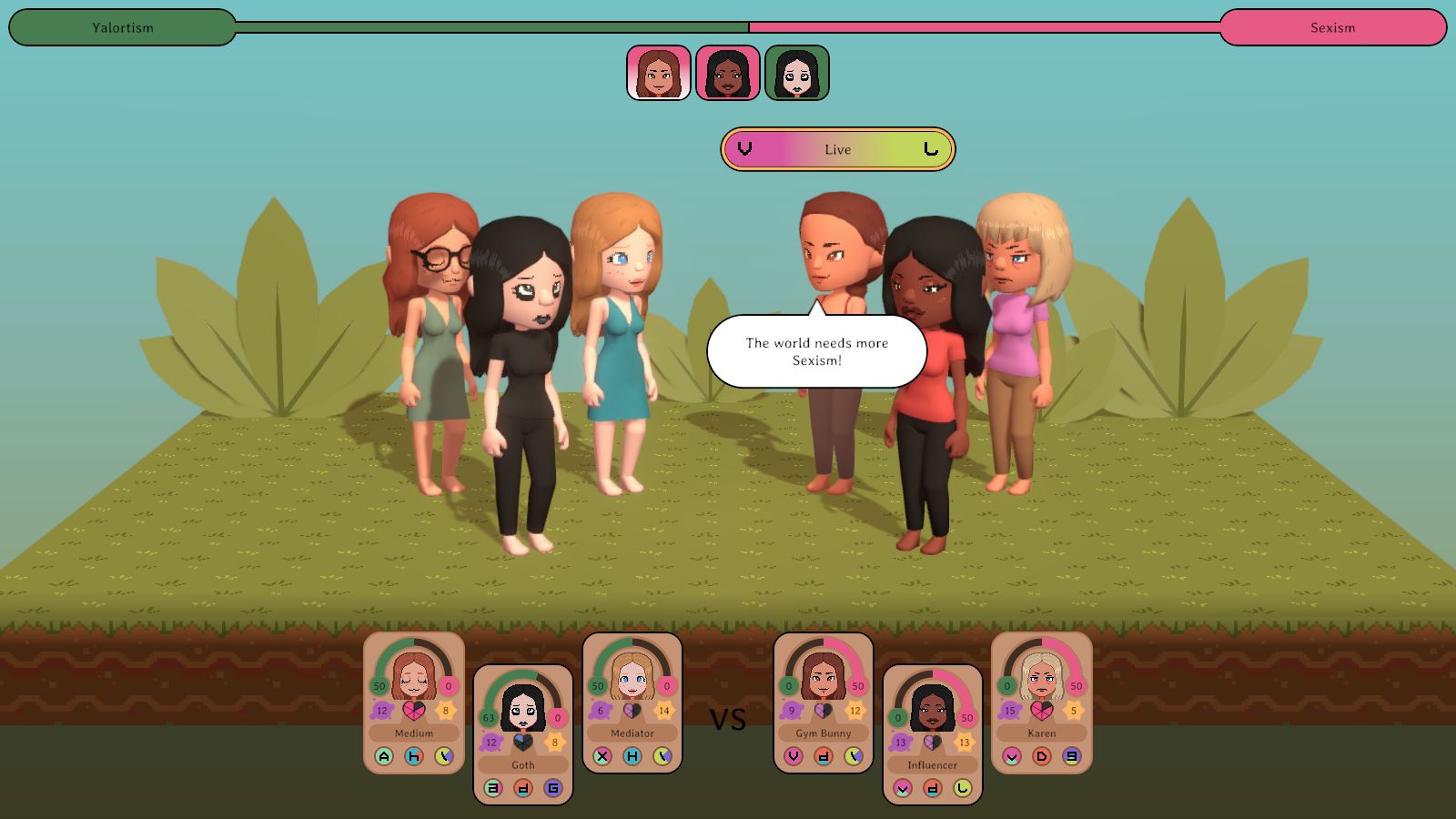
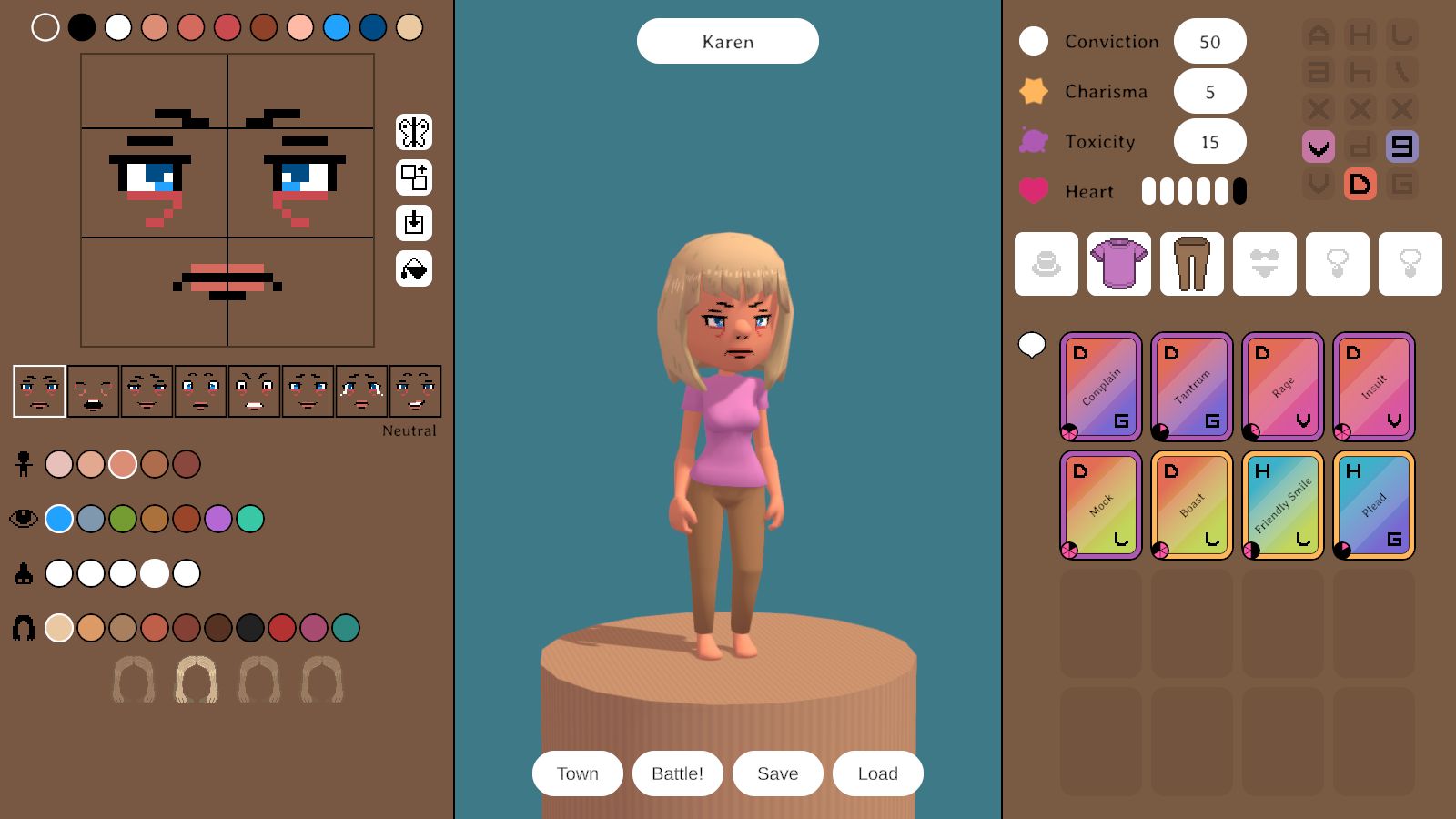
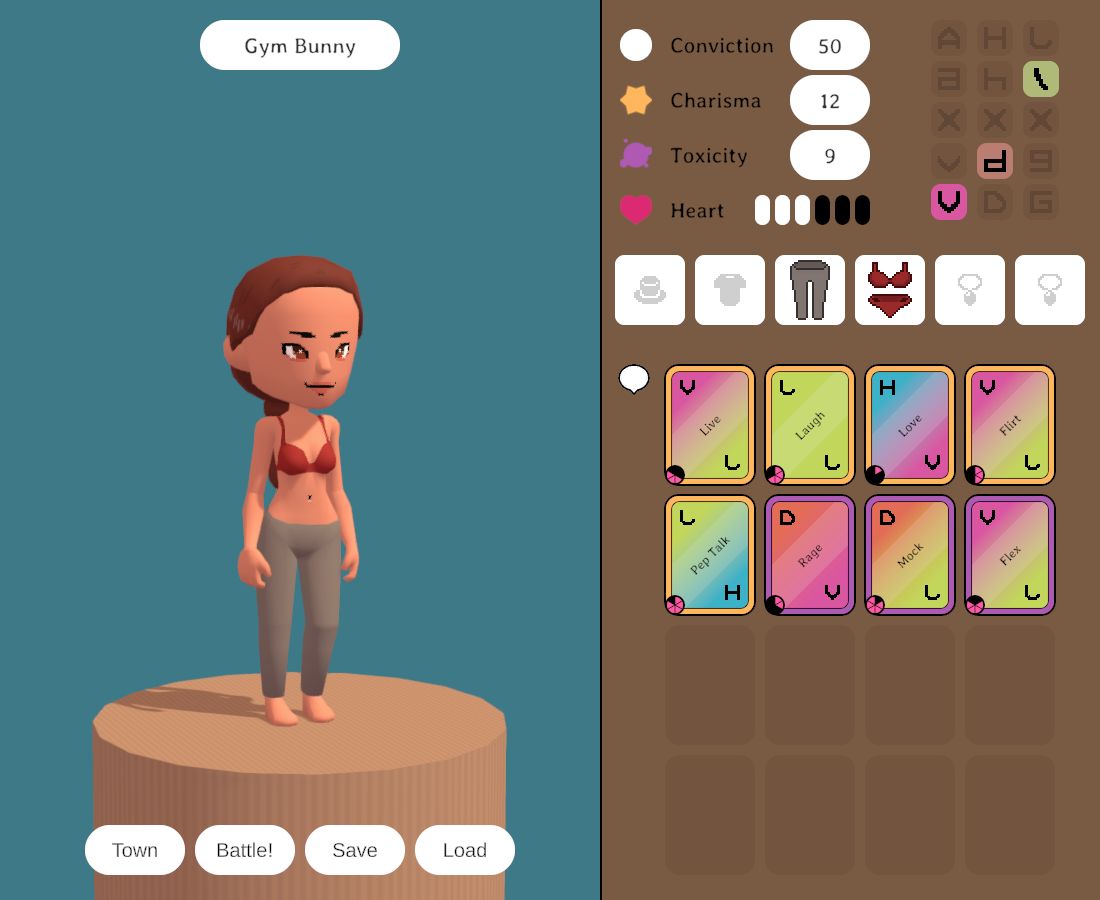
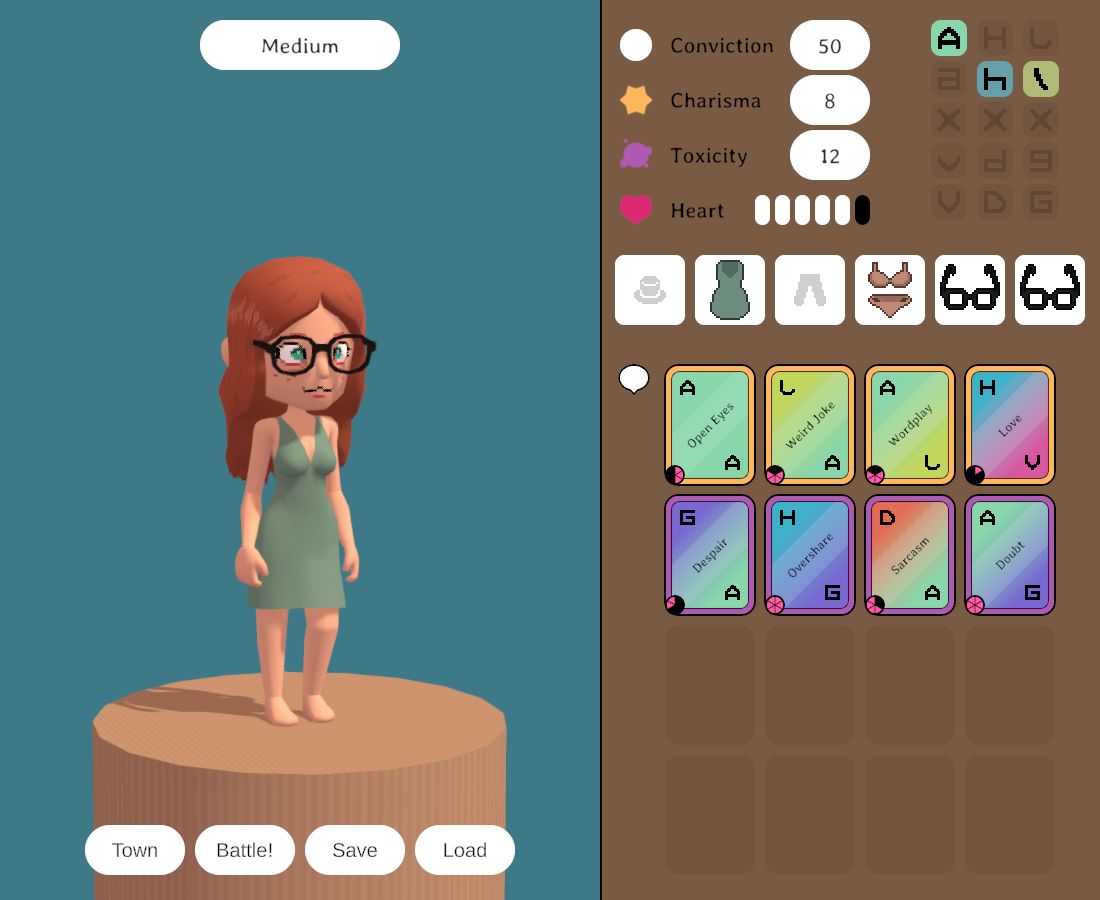

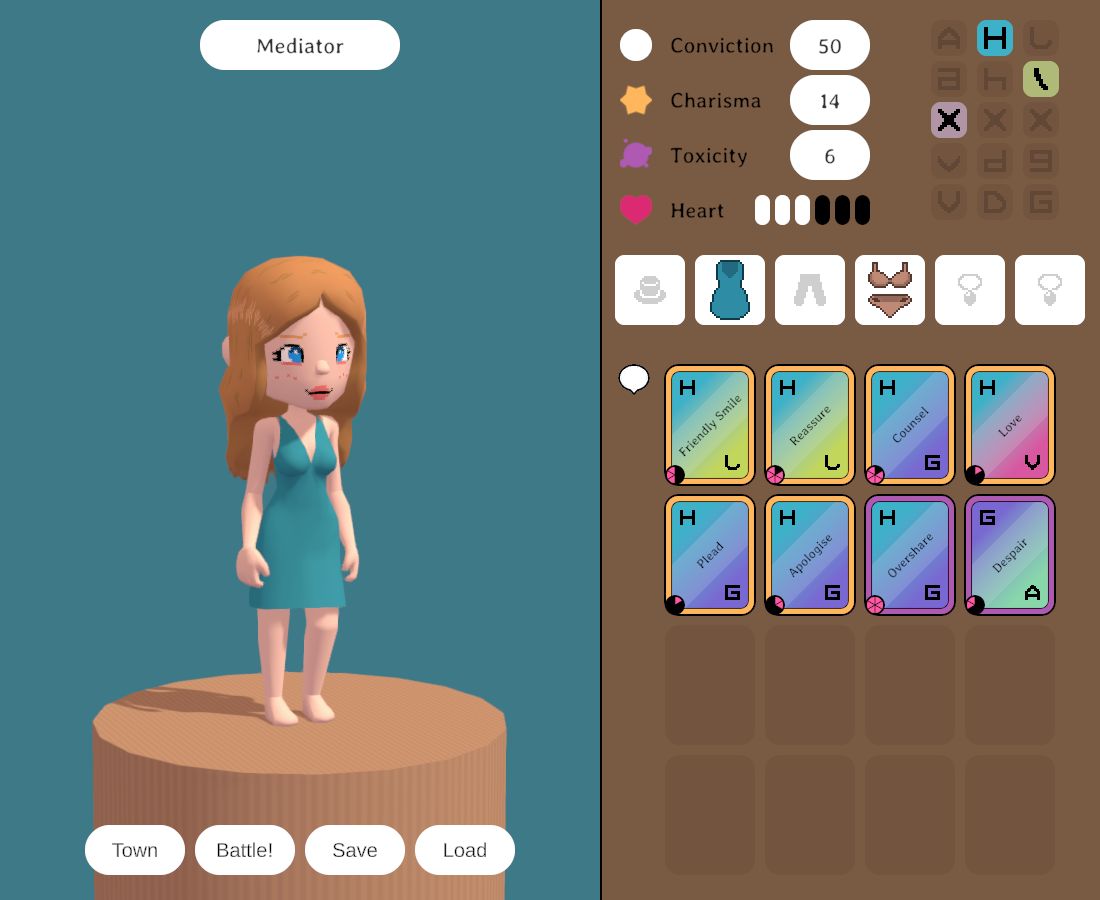
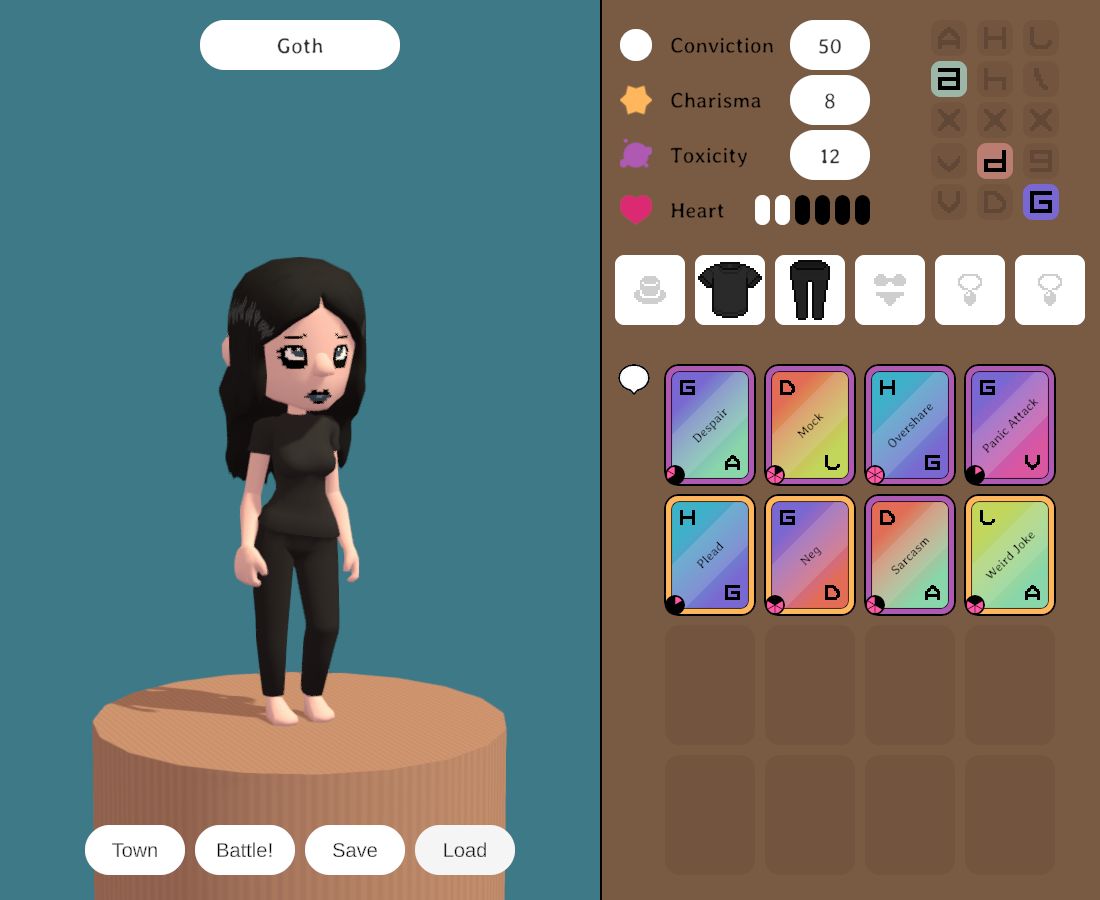
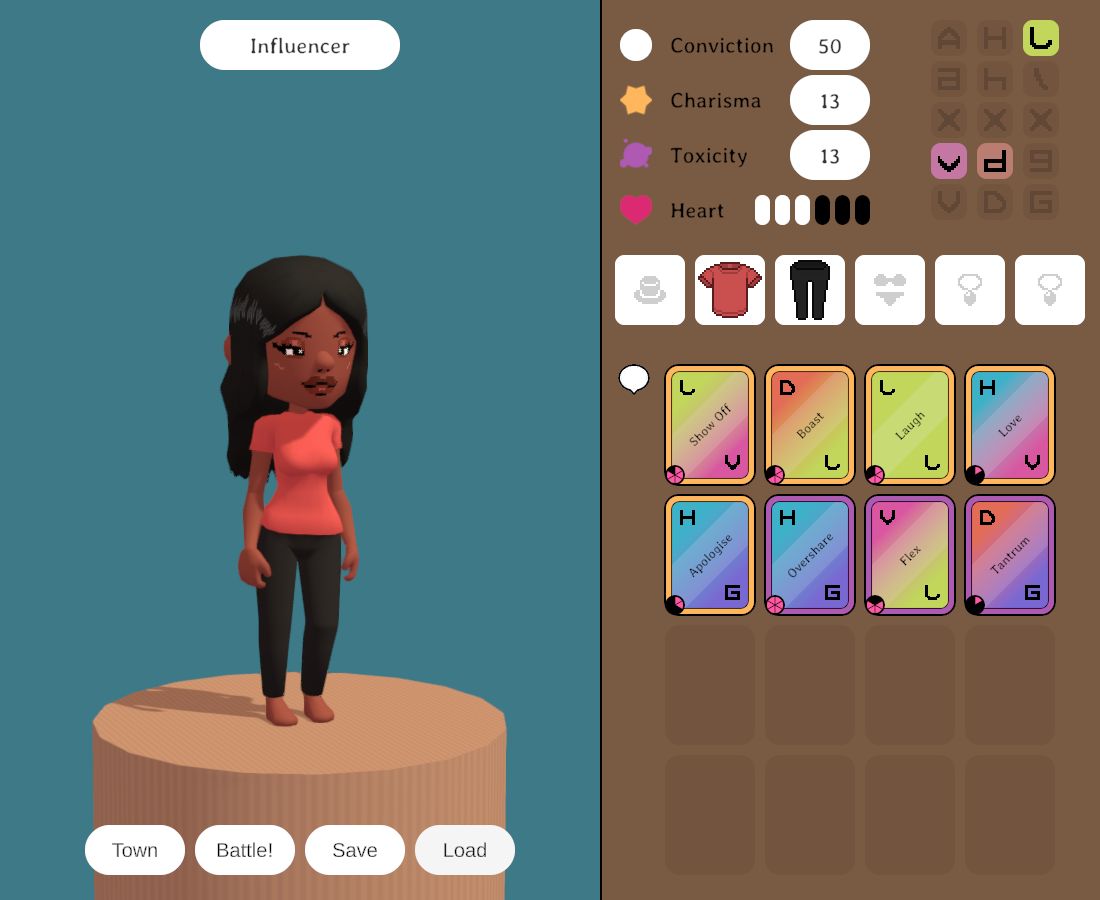
4